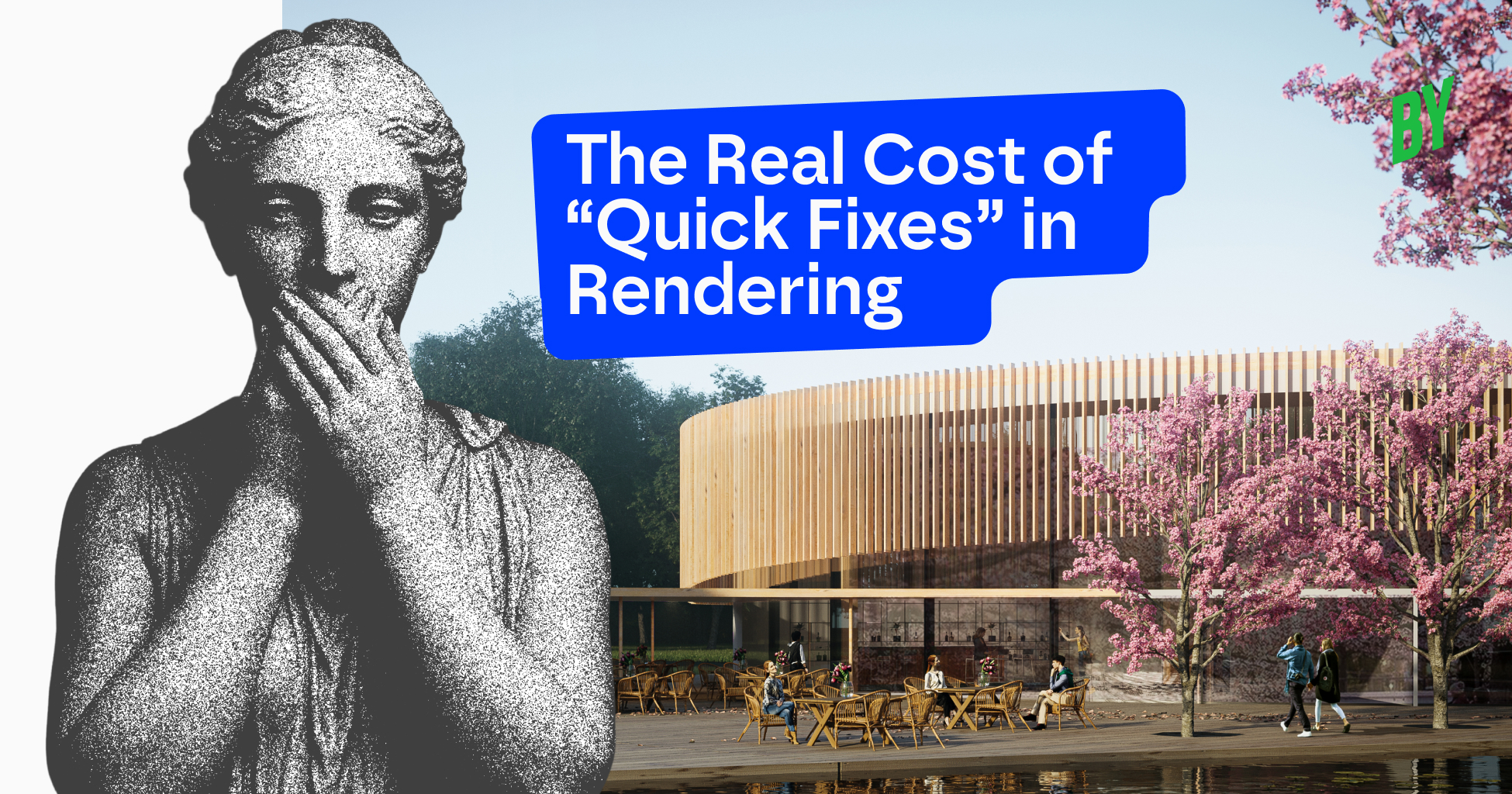The Quick Fixes That Quietly Kill Quality
Quick fixes are tempting. They save time and produce fast results. But they carry hidden costs.
Here are the most common ones that quietly sabotage your render:
- Overusing ambient occlusion: creates unnatural dark creases
- Low-res textures: make surfaces look flat and lifeless
- Default HDRIs: strip scenes of direction and bounce
- No edge bevels: break scale and realism
- Glossy materials with no roughness: look fake, especially metals or glass
- Heavy Photoshop glow, contrast filters, or fake shadows
These shortcuts don’t just make the image look fake. They make it feel careless. They turn emotion into assumption.
When the Client Feels Something’s Off
Clients may not know rendering terminology, but they know when something doesn’t feel right.
It might be:
- Lighting that feels too even
- Materials that look too smooth
- Shadows that don’t match context
- A sense of scale that’s off without clear reason
They won’t always explain it. But they’ll hesitate. And that hesitation is deadly in a pitch.
It tells them: something here isn’t believable.
Short-Term Wins, Long-Term Damage
Why do we reach for these quick fixes? Because we’re under pressure. Because they seem to work—at least on the surface. Because clients want fast turnarounds.
But what looks good in a rush often unravels under scrutiny. Visual shortcuts are like filters on Instagram: recognizable, repetitive, and emotionally distant.
Speed doesn’t excuse shallow visuals.
You save 30 minutes and lose the moment that closes the deal.
The Fix That Backfired
We’ve been there. We tried reducing render settings to save time—increasing noise to speed things up.
It wasn’t worth it.
Now, we rely on render farms to hit deadlines without compromising depth. Because a noisy image cleaned up in Photoshop doesn’t build trust. It builds suspicion.
Clients chose our slower, moodier, more considered versions every time. Why? Because they felt something. They could believe in the space—not just see it.
The Emotional Fallout of a Rushed Render
Even if it’s technically fine, a rushed render feels cold. Disconnected. Forgettable.
Clients don’t remember the polish. They remember the feeling.
And when a render feels generic, overly filtered, or artificially lit? It quietly says: “This wasn’t worth the time.”
And if it wasn’t worth your time—why should they trust it?
When Plugins Make the Problem Worse
Plugins and filters have their place. But when they’re overused or misused, they backfire.
Glow effects. AI-generated landscaping. Auto-exposure corrections. Post-process blur. They might wow at first glance—but the cracks show on closer look.
Clients might not say “This looks fake.” But they will feel it.
Realism doesn’t come from tech. It comes from intent.
What to Tell Clients Who Want It Faster
Some clients ask: “Can you just throw something together?”
You can. But you shouldn’t.
Here’s what we say: Shortcuts might save time today. But they rarely build trust tomorrow.
When we take the time to light properly, build with real scale, use honest textures, and fine-tune the emotional tone—we’re not just making a picture. We’re making a story that sticks.
The client may not know the software. But they know when they’re being sold a shortcut.
Advice to Young Artists: Fix It in 3D
Don’t rely on post. Fix it in the source.
Photoshop is seasoning, not the main dish.
If you’re constantly correcting lighting or fixing broken compositions in post, it’s time to revisit your foundation.
When the core 3D work is strong, the render holds up everywhere.
You don’t just save time. You save trust.
Every Shortcut Sends a Message
Here’s the truth: A render that feels rushed tells your client something.
It says:
- You didn’t have time.
- You didn’t think it through.
- You don’t care enough.
But when you take the time to craft light, material, mood, and scale with purpose? It says: You can trust us.
And that’s what closes deals.
Clients won’t always give you the benefit of the doubt. But they’ll always give their attention to what feels real.




